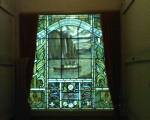“Natural burial is what we have been doing for millennia. People may be leery of this new fandangled technology.”
– Janet McCausland, Executive Director of the Toronto-based Natural Burial Association
Eco-this, eco-that. Seems everybody wants to “go green” these days—even in death. I say, why not? It’s the last good deed you can do for the planet after you shuffle off that mortal coil.
Eco-friendly burial practices are not necessarily a new phenomenon, but they are receiving more attention and interest these days as environmentally friendly practices of all kinds take hold. An article in the NY Times covered the topic about 4 years ago when they profiled the Fernwood Cemetary in northern California.
Take, for example, a recent article in The Walrus, a Canadian general interest publication akin to the U.S.-based Utne Reader. In the latest issue, writer James Glave, writes about the process of “promession”, which is actually a neologism used to describe the process of ecologically inclined disposal of bodies by way of freeze drying. In other words, the term may not have caught on yet, but the concept of freeze drying one’s remains to then be implanted into soil so that life may begin anew, is gaining purchase with the eco-friendly crowd.
On a more personal note, my experiences with freeze drying have primarily been with either Folger’s coffee or the disturbing (at the time) purchase of a freeze dried duckling my parents bought at a flea market back in the 1980s. Literally frozen in time, this little guy had been saved for posterity due to its cute factor—and the fact that it could be suspended in time, fuzz and all, in a perfect non-animated but life-like state—mesmerized and seduced my parents to purchase and display him in our living-room curio cabinet for years, where it remains to this day.

 A Certain Kind of Death
A Certain Kind of Death A Certain Kind of Death is an amazing piece of documentary filmmaking. Given unprecedented access to the processes that go on behind the scenes when someone with no next of kin dies, the filmmakers present a stark and moving portrait of this “certain kind of death.”
A Certain Kind of Death is an amazing piece of documentary filmmaking. Given unprecedented access to the processes that go on behind the scenes when someone with no next of kin dies, the filmmakers present a stark and moving portrait of this “certain kind of death.”